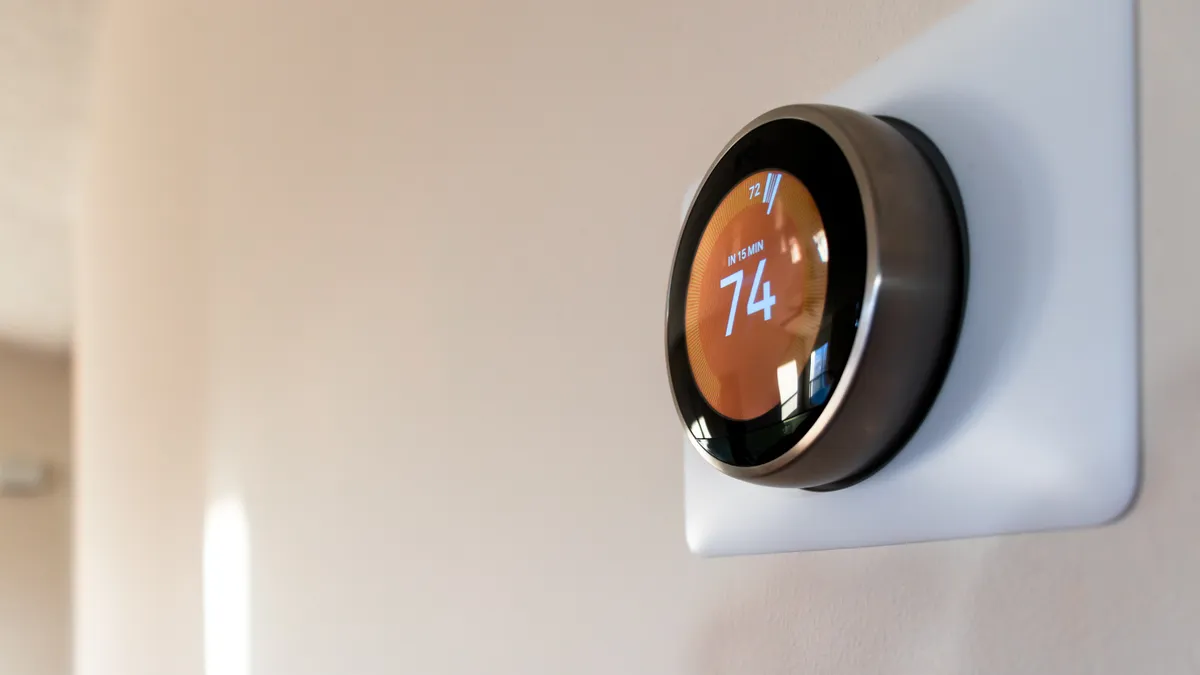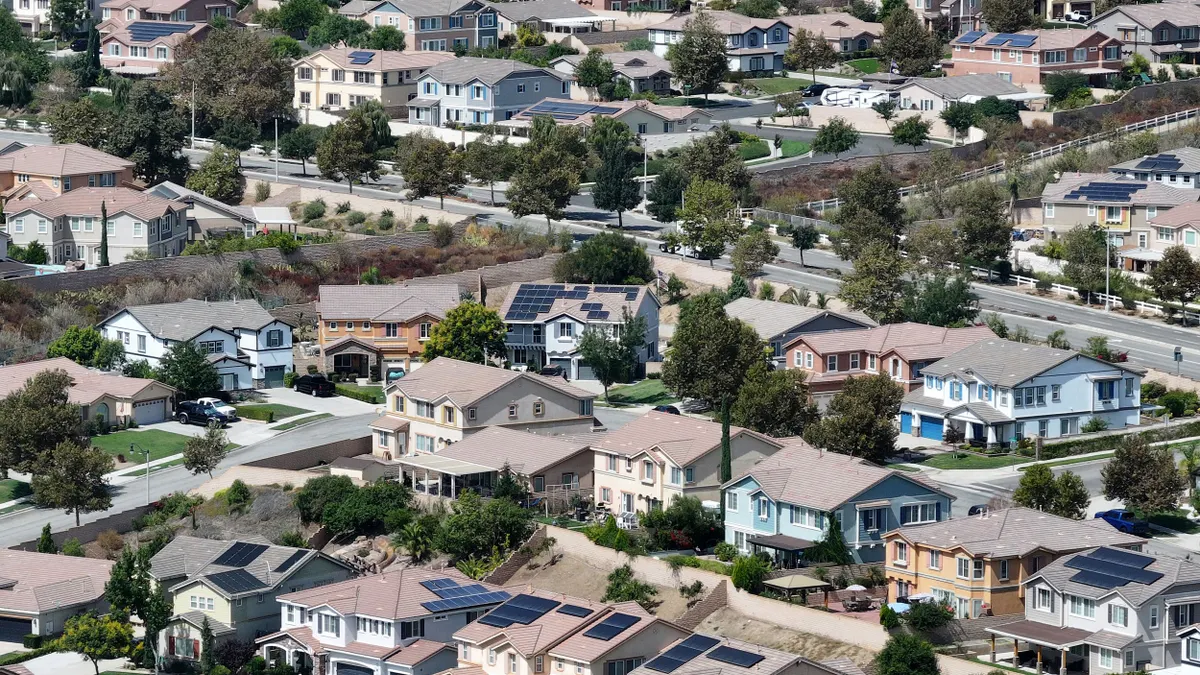Late last month, New York's investor-owned utilities took the next step in the state's Reforming the Energy Vision (REV) docket, filing broad outlines for how they will modernize their grids and evolve their business practices to encourage distributed energy resources.
The filings, known as Distributed Service Implementation Plans (DSIPs), offer a first look at how utilities plan to function under the state's landmark regulatory initiative. Hundreds of pages came in from each of the state's power providers, describing new capabilities, deferred investments, distributed resources and new market structures.
But the documents are really just a jumping-off point: a "snapshot of where utilities are now," according to Steve Wemple, general manager of Con Edison’s Utility of the Future team.
That's despite ConEd's DSIP filing of more than 350 pages.
New York's Reforming the Energy Vision proceeding seeks to modernize power systems and business models, converting regulated utilities into distribution system platform providers and removing barriers to third party capital deployment. So far utilities have begun proposing demonstration projects and the Public Service Commission has approved reforms utility revenue models, opening new avenues for profit generation while preserving the traditional cost-of-service model as an option.
The latest round of filings is the next step: For the first time, utilities are outlining definitive processes to implement the REV framework, transmit data to providers, and build a system to manage a network of dynamic DERs. The level of detail in the first round of DSIP filings is of concern to some distributed resource providers, who would like to see more information, especially on system costs. But while utilities may want to hold some cost data close to the vest, more information is on the way.
"If you think this is a meaty document, we have another one we will put out in November, where the goal posts should be longer term," said Wemple. "This is by no means a once-and-done."
Data and cost concerns
As New York utilities look to defer capital investment through non-wires alternatives (NWA), they are turning to third-party providers of distributed solutions — solar, storage, microgrids, demand management — that can help them stave off traditional capital expenditures while also generating revenues.
But according to some distributed resource providers, more detail on the system costs and various points on each utility's would be helpful to identify points where DERs might be better than traditional grid investments.
"In a lot of cases, you’re not going to find the actionable information in the DSIPs themselves" to optimally site DER technologies, according to Danny Waggoner, senior associate at Advanced Energy Economy. "Providers still have to go through a process."
The group represents a wide range of energy systems providers from storage to software and electric vehicles. "There are still going to be questions about the level of data available," said AEE Senior Vice President of Strategy Lisa Frantzis. "I think the level of data provided, it will be adequate for some of the suppliers."
ConEdison's DSIP, for example, forecasts $214 million in capital investments for system expansions over the next five years, and the utility says it is seeking non-wires alternatives via its Brooklyn-Queens Demand Management demonstration project for more than half of that total.
But Frantzis added the group has "had a lot of requests from our members in the past about what the actual costs are. ... My initial read of ConEdison's DSIP: It's a lot of load data and historical data, but I don’t know how much cost data they’re going to provide. That’s the question our members will need [answered], and it provides info on what value their services provide."
Orange & Rockland, an upstate ConEd subsidiary, said in its DSIP that it is working with stakeholders to develop methodology for making "relevant information derived from that data available to DER providers for the purpose of optimizing DER locations on the grid." But the utility warned it is a complicated process with both system security and reliability implications.
"Ultimately, the objective is to establish processes and procedures that allow for external parties to deploy DER in locations where, and in a manner in which, the DER provides the most benefit to customers and the system," O&R said.
National Grid's DSIP echoed concerns over security, pointing out that "the integration of utility and third-party systems will increase the vulnerability for cybersecurity threats and the improper access to private information. A strong framework for cyber protections is imperative."
But DER advocates worry about the level of detail.
"For behind-the-meter applications as opposed to larger front-of-meter applications there clearly is more data needed," said Sharon Hillman, AES US Strategic Business Unit Lead for Market Policy and Business Development. "What the filing outlines is potential opportunities, but how the procurement will be done, and the timeline, isn't clearly there."
ConEdison's Wemple said more data is certainly on the way in upcoming filings, and more will be available as the utility develops security protocols for sharing it. But providing just some information on costs could wind up skewing auction results, he said.
"It's a questioning of biasing the market from a competitive standpoint," he said. "People will try and come in just under the limbo bar."
As for the the procurement process, ConEd is preparing to announce a new reverse auction mechanism for some 2017 and 2018 demand response the utility is seeking. A series of two auctions will be announced for two different four-hour blocks, Wemple said.
"Previously we had a free-form request for information," Wemple said. "It was not consistent." The new system is designed to standardize requests and harness market efficiencies. "We're going to have the market better inform us of prices," he said.
The new auction mechanism is a way "to get the market to tell us what the cost is rather than us telling them," Wemple said. Historically, utilities offered credits and rebates, but "different customers and installations have different value propositions. We think it’s going to be much more efficient. "
Demo project updates
The utilities also provided updates in their DSIPs on demonstration projects already underway.
"We think the demonstration projects are going to be critical, Frantzis said. "A lot of people have great ideas but until you put them in real situations, you don’t know if it works. One thing New York is trying to do, is focus on these demo projects not just on technology but as business models also, and that’s going to be the exciting part."
The New York State Electric and Gas Co. (NYSEG) and Rochester Gas & Electric (RG&E), two upstate utilities, regulators in their joint DSIP they are moving ahead with a Flexible Interconnect Capacity Solution which tests a new model for interconnecting large-scale, controllable DERs to the grid. The two companies say they have evaluated over 400 DER interconnection studies and identified two leading candidates in the NYSEG service territory: a 2 MW solar PV farm and a 450 kW farm waste biodigester.
RG&E also said it has kicked off its energy marketplace development by meeting with Simple Energy. "Coordination efforts are currently underway to allow the Energy Efficiency and Demand Response programs to utilize the Energy Marketplace as a distribution channel for each program’s initiatives," the utility said.
The marketplace "was designed to test market engagement approaches and to stimulate market development," according to the filing.
For Consolidated Edison, the utility is pushing ahead with its Brooklyn-Queens Demand Management project, which seeks to delay building a substation that would cost more than $1 billion. It has also begun development of a virtual power plant that seeks to aggregate solar and storage at 300 customer locations to bid into wholesale electricity markets.
During the first quarter of this year, the utility achieved its first annual goal for customer-side solutions ahead of schedule through implementation of over 9 MW of peak hour customer-side reductions, primarily energy efficiency measures.
ConEd is also making progress in contracting and installation of energy efficiency measures through incentive adders to two existing Energy Efficiency Portfolio Standard programs: small business and multi-family offerings.
An example for the rest of the country
As New York continues through the REV process — an evolution with no definitive endpoint — Frantzis said the most significant impact may be seen outside the state's borders.
"The biggest value New York has had is not just in New York. They’ve really been posing challenging questions, and they're not going to have simple answers," she said. "It’s setting a stage for having other states review where they’re going with the regulatory framework and business models."
Frantzis said she is optimistic about the road ahead, but also realistic. "There probably won’t be a lot of early successes. Hopefully there will be but I think it’s going to take time. The technological innovation is there and what needs to catch up is the regulatory framework."
The closest parallel to New York's process is probably California, which has been studying where and how distributed resources would best be added.
"There are lots of parallels," said Wemple. "We're kind of approaching it from two different perspectives. California already has a tremendous amount of renewables integrated, they’re looking for how to better do that." In New York, the state is looking to "create market mechanisms, so service providers and control schemes can all come together and deliver products in a little more nimble way than traditional utilities."
The DSIPs will be summer reading for many DER providers, but it will take time to work through, said Waggoner.
"It’s a little too early to know whether these are adequate," he said. "The companies are still pouring through them, we don’t exactly know what is in them yet — they are huge documents. We will hear from our providers, whether they’re getting the right data."





















